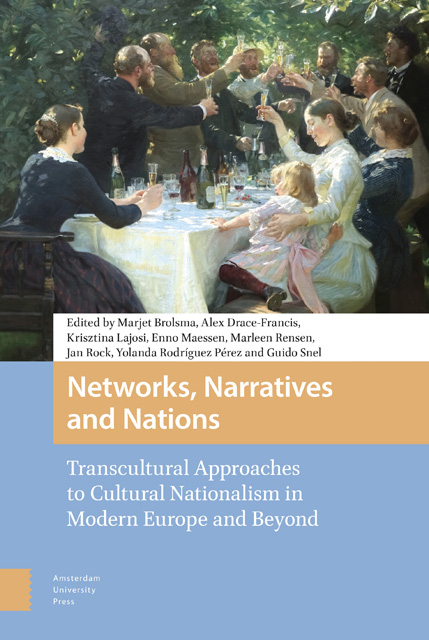 Networks, Narratives and Nations
Networks, Narratives and Nations Book contents
12 - Sigurður Guðmundsson and Jón Árnason’s Icelandic Folktales
Published online by Cambridge University Press: 16 November 2022
Summary
Abstract
This chapter deals with a key figure in the creation of Icelandic national culture, Sigurður Guðmundsson the painter, and the central role he played in the early collection of Icelandic folktales.
Keywords: folktales; Iceland; Siguður Guðmundsson; national culture
“I will miss Sigurður for a long time; I cannot remember missing any person who is unrelated to me any more than this.” These words were written by the Icelandic folklore collector, Jón Árnason in a letter to Jón Sigur.sson, the Danish-based leader of Iceland's struggle for independence, on 18 October 1874, several weeks after Sigurður Guðmundsson málari (the painter) had died of consumption in Reykjavík at the age of just 41. Jón and several of Sigurður's other friends had then been doing their best to keep him alive for several years.
Sigurðvur Guðmundsson's key role in the creation of national culture in Iceland is unquestionable. While scholars have discussed his role in the design of the Icelandic national costume, the development of a national theatre and the institution of a national museum, much less has been said about his involvement with Iceland's central folk-tale collection, Jón Árnason's Íslenzkar þjóðsögur og æfintýri (Icelandic Folktales and Wonder Tales, or Icelandic Legends, 1862–64). Indeed, Sigurður is given special mention in the introduction written by Guðbrandur Vigfússon as being one of those who “tell stories best and deserve special thanks for their role in this collection.”
Worth underlining immediately is the fact that when Jón Árnason was working on Íslenzkar þjóðsögur og afintýri in 1861, he spent some time living in the same house as both Sigurður and Matthías Jochumsson, at Aðalstræti 7 in Reykjavík. These three made up a very influential group: Jón Árnason, the 42-year-old town librarian, was already collecting folktales; Sigurður, at 28 years old, was working on a range of projects relating to the creation of national culture; while the 26-year-old Matthías Jóchumsson, later to become the national poet, was writing the first “national” drama, Útilegumennirnir (The outlaws), for which the painter would make the scenery and costumes. Matthías describes their life together as follows: “During the first part of that winter […], I was living in the same house […] as Sigurður the painter. Also there was Jón Árnason […] – both obsessed with – and full of – Icelandic knowledge; they had a great […] influence on me.”
- Type
- Chapter
- Information
- Networks, Narratives and NationsTranscultural Approaches to Cultural Nationalism in Modern Europe and Beyond, pp. 147 - 156Publisher: Amsterdam University PressPrint publication year: 2022


